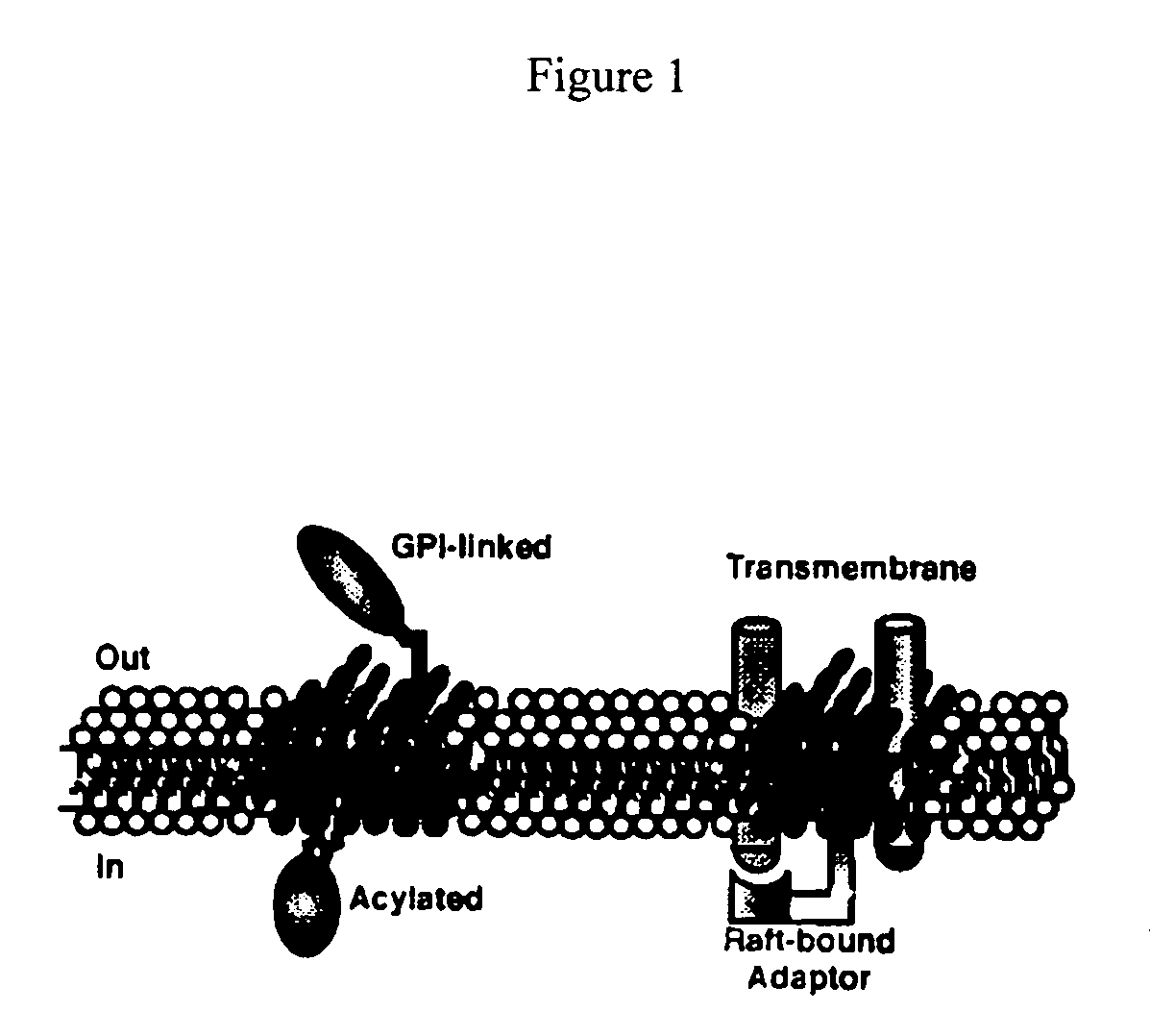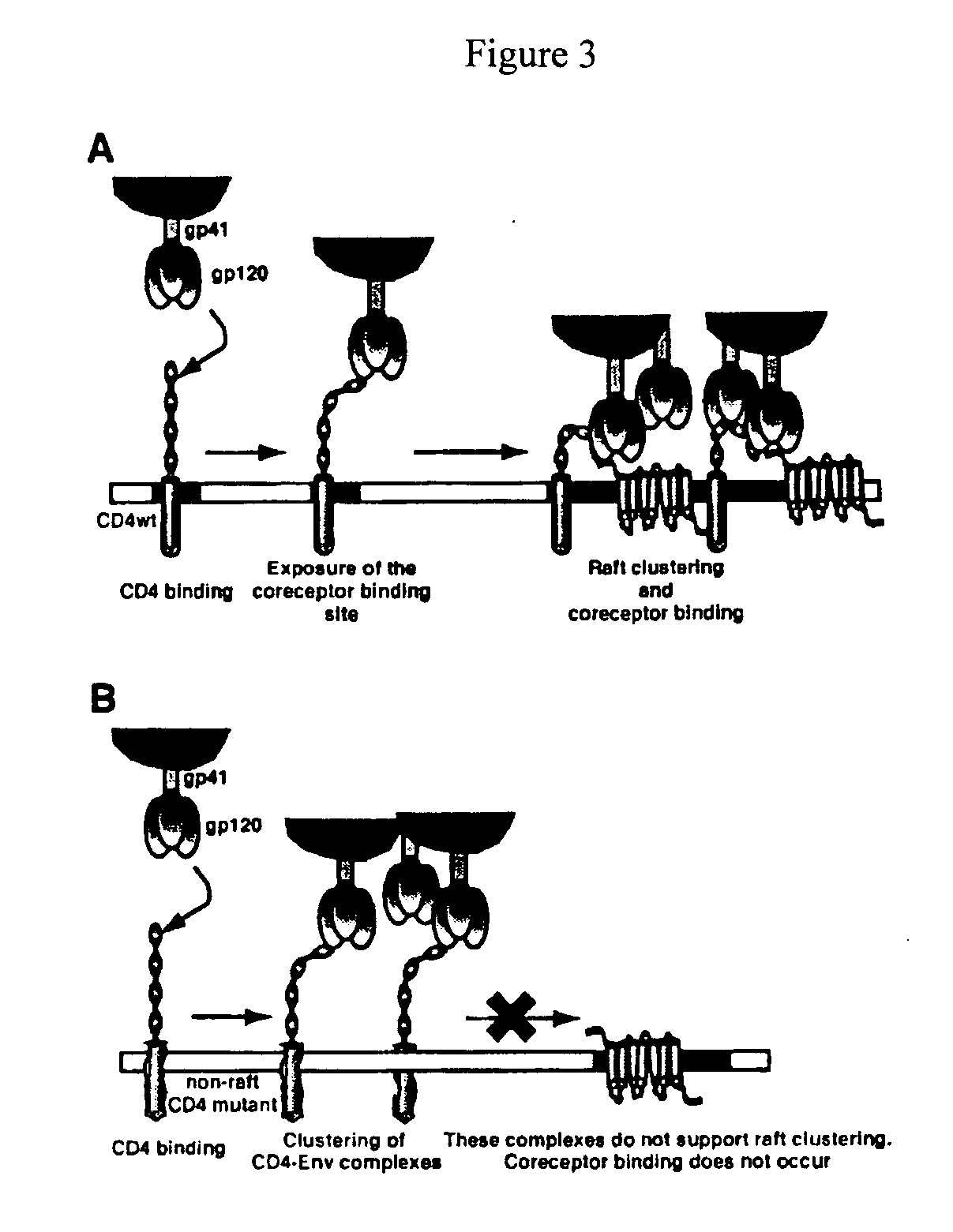Prevention of hiv-1 infection by inhibition of rho-mediated reorganization and/or content alteration of cell membrane raft
a cell membrane and raft technology, applied in the field of prevention or delaying of retroviral infection, can solve the problems of inability to make quantitative comparisons between drms and native rafts, the existence of rafts has not yet been conclusively demonstrated in cell membranes, and the inability to accommodate membrane-spanning and prenylated proteins in an ordered environment, etc., to inhibit rho gtpase activity and inhibit protein isoprenylation
- Summary
- Abstract
- Description
- Claims
- Application Information
AI Technical Summary
Benefits of technology
Problems solved by technology
Method used
Image
Examples
examples
[0193] As illustrated below, statins inhibit HIV-1 infection of SCID mice grafted with adult human peripheral blood mononuclear cells (PBMC; SCID-hu-PBMC), an in vivo model of acute HIV-1 infection. The results also illustrate that statins inhibit virus entry into and exit from target cells by targeting Rho geranylation. Strikingly, one-month oral statin administration reduced serum HIV-1 RNA copy number in chronically HIV-1-infected individuals not receiving HAART (Table I). These data provide evidence to support the principle of the use of statins as therapeutic anti-retroviral agents.
Materials and Methods
[0194] HIV-1 infection. Single-round infections were performed with a replication-defective pNL4-3.Luc.R-E pseudotyped with HIV-1ADA or vesicular stomatitis virus (VSV) envelopes (Mañes, S. et al (2000) EMBO Rep. 1:190-196). MT2-CCR5 cells (a gift of J. Alcami, Inst. Salud Carlos III, Madrid, Spain) were treated with 10 μM lovastatin (48 h, 37° C.) alone or combined with L-mev...
PUM
| Property | Measurement | Unit |
|---|---|---|
| Content | aaaaa | aaaaa |
| Antimicrobial properties | aaaaa | aaaaa |
Abstract
Description
Claims
Application Information
 Login to View More
Login to View More - R&D
- Intellectual Property
- Life Sciences
- Materials
- Tech Scout
- Unparalleled Data Quality
- Higher Quality Content
- 60% Fewer Hallucinations
Browse by: Latest US Patents, China's latest patents, Technical Efficacy Thesaurus, Application Domain, Technology Topic, Popular Technical Reports.
© 2025 PatSnap. All rights reserved.Legal|Privacy policy|Modern Slavery Act Transparency Statement|Sitemap|About US| Contact US: help@patsnap.com



